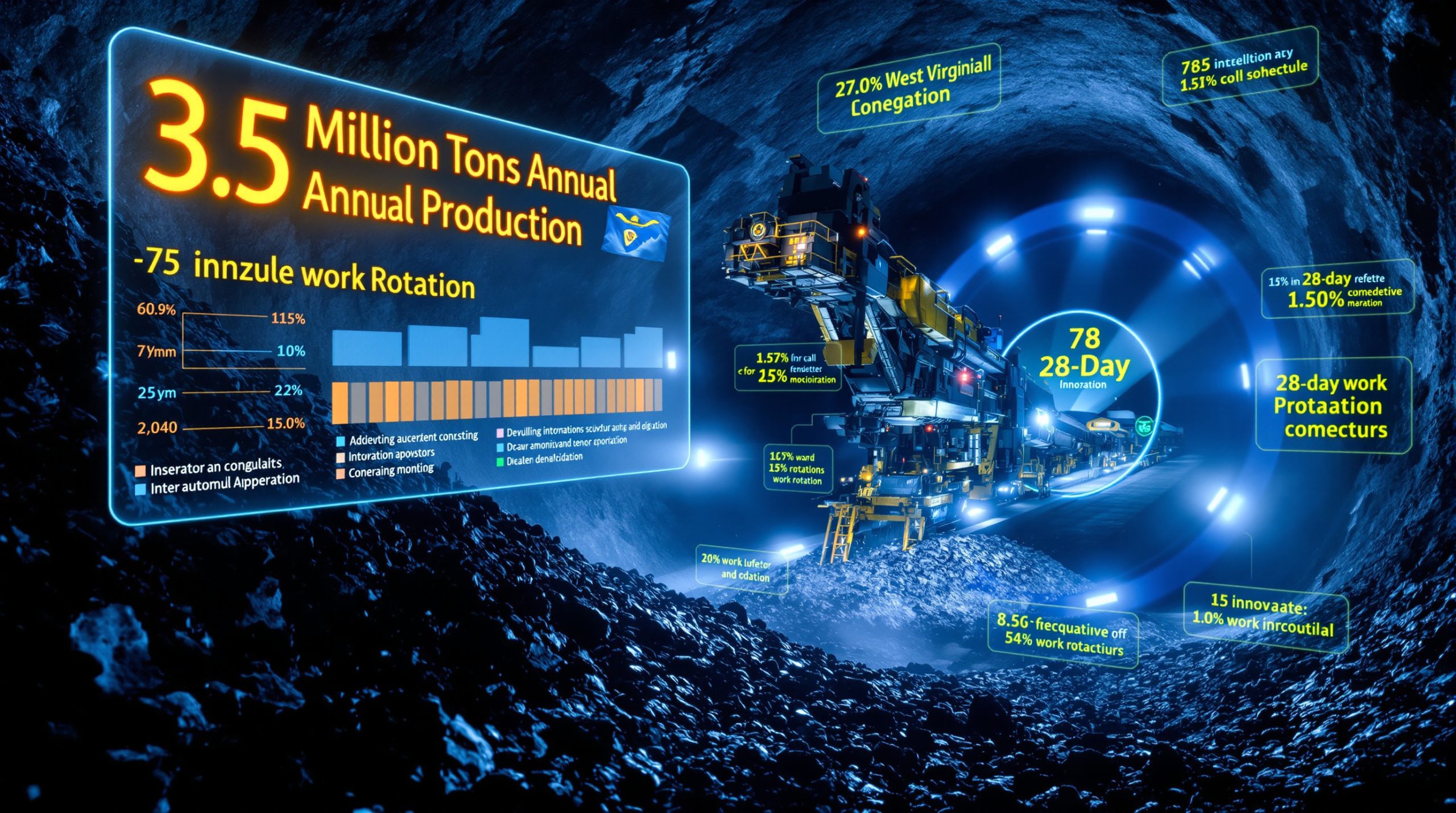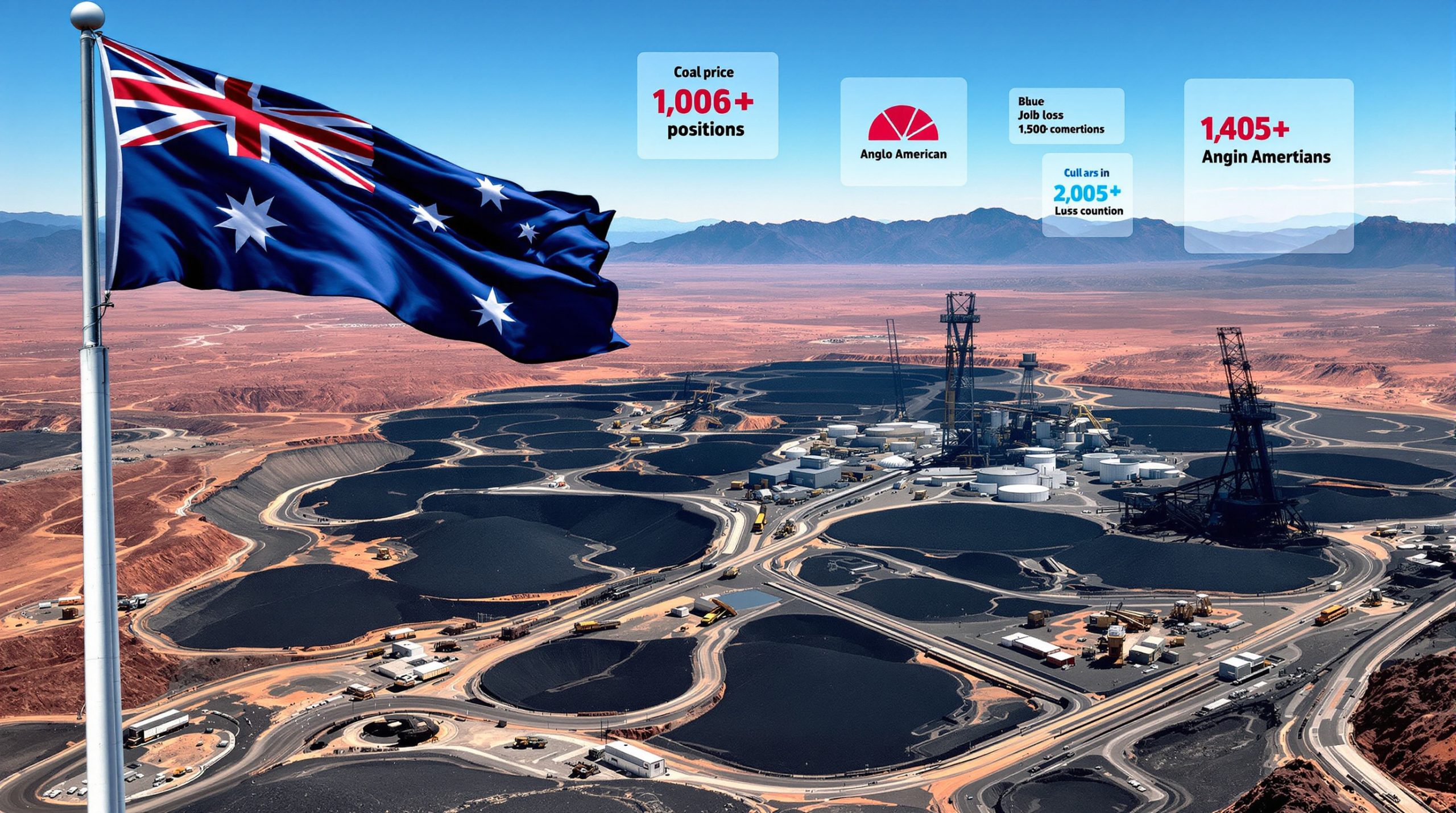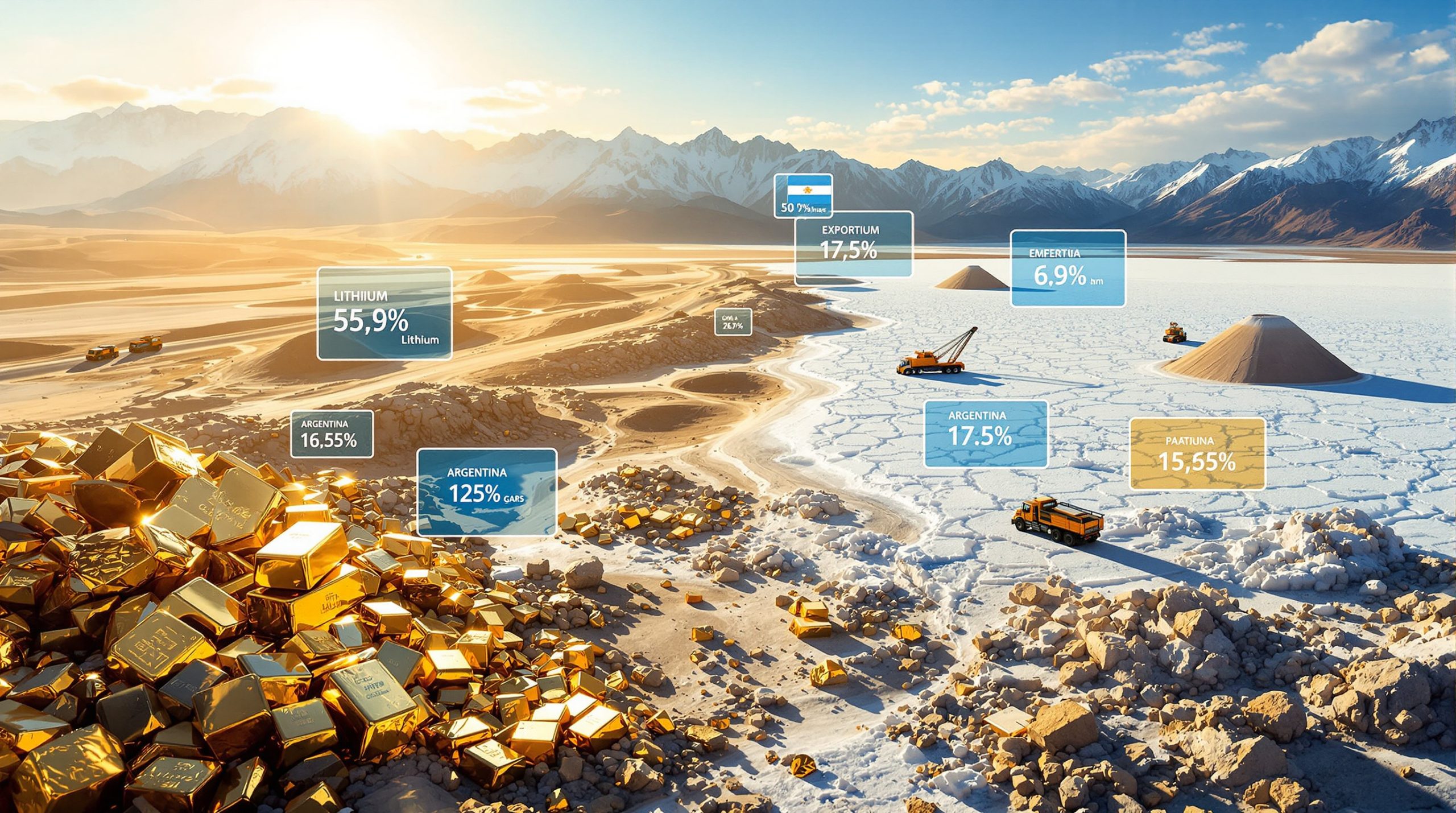What Are the Key Areas for US-Russia Business Cooperation?
The potential post-war economic relationship between the United States and Russia centers around two strategic sectors that could reshape global markets: energy and critical minerals. These areas represent both geopolitical leverage and economic opportunity in a complex international landscape where US-Russia joint business in energy and metals could fundamentally alter supply chains and regional influence.
Energy Sector Collaboration
The energy partnership framework being discussed involves unprecedented cooperation across multiple domains. Joint projects in the Arctic region for oil and gas exploration stand at the forefront, with American companies potentially gaining access to some of the world's largest untapped hydrocarbon reserves. Before Russia's invasion of Ukraine, the country exported approximately 155 billion cubic meters of natural gas annually to Europe, creating a massive supply gap when imports were reduced by over 80% following the conflict.
American involvement in Russian natural gas deliveries to Europe represents a significant pivot in energy diplomacy. The proposal includes potential US participation in Gazprom PJSC projects, which could revitalize stalled initiatives like Nord Stream 2. This pipeline, halted in 2022, had the capacity to supply 55 billion cubic meters annually to European markets.
Perhaps most controversial is the proposed US control of Ukraine's Zaporizhzhia Nuclear Power Plant, currently under Russian occupation. This facility, which generated 20% of Ukraine's electricity before the war, would operate under American management with its electrical output distributed to both Russia and Ukraine. Ukrainian President Volodymyr Zelenskiy has expressed concerns about this arrangement, noting that "US management of Zaporizhzhia requires Ukrainian technical expertise, raising security and access concerns."
The restoration of Russia's energy exports to Europe with American investor participation could reshape European energy security. However, this faces headwinds from the EU's REPowerEU plan, which aims to phase out 90% of Russian fossil fuels by 2027 through $300 billion in alternative infrastructure investments.
Critical Minerals and Rare Earth Elements
The second pillar of potential cooperation focuses on rare earth minerals and critical metals—resources essential for the clean energy transition and advanced manufacturing. China currently dominates this space, accounting for 60% of global rare earth production, while Russia possesses significant undeveloped reserves.
US investment in Russia's Tomtor deposit in Yakutia represents a strategic opportunity to counter Chinese market control. This deposit contains approximately 19% of the world's niobium reserves, critical for aerospace alloys and superconducting magnets. Development stalled in 2022 when sanctions blocked access to Western extraction technology. The remote Yakutia location requires an estimated $2 billion in infrastructure investments before full-scale operations can begin.
This collaboration addresses China's growing dominance in the sector—Russia's trade with China reached $146 billion in 2021, approximately 70 times larger than the $36 billion in US-Russia trade during the same period. By developing stalled projects requiring technologies currently restricted by sanctions, both nations could establish a counterbalance to Chinese critical mineral export restrictions.
Putin's November order to ensure development of Tomtor, either by current owners or with help from other investors, signals Russian eagerness to monetize these resources. If sanctions on dual-use technologies are lifted, AI-driven exploration tools could potentially reduce development costs by 25%, making the project more economically viable.
How Would a Peace Deal Impact Economic Relations?
The framework for economic reengagement between Russia and the United States hinges on a comprehensive peace agreement that would gradually unwind the complex web of restrictions imposed since 2014, with significant acceleration after the 2022 invasion of Ukraine.
Sanctions Relief Framework
The United States has proposed lifting sanctions on Moscow as part of a potential peace agreement, but this process faces multiple complications. Over 16,000 US and EU sanctions currently target Russian entities, including 1,200 sectoral measures specifically focused on energy and finance. Trump's April 2025 proposal ties sanctions relief to Russian withdrawal from approximately 80% of occupied Ukrainian territory.
Any comprehensive sanctions relief would require European Union agreement, as many of the most impactful restrictions were imposed by the bloc rather than unilaterally by the United States. This creates a diplomatic challenge, as European nations have generally taken a harder line on Russia than the transactional approach favored by the Trump administration.
The potential for a more flexible approach to sanctions enforcement would allow US energy companies to secure stakes in Russian ventures even before full normalization. This gradual approach acknowledges the complex reality that SWIFT restrictions on Russian banks have increased cross-border transaction costs by 40% since 2022, creating significant practical obstacles to business even if political agreements are reached.
Economic incentives are viewed as a key element in persuading Putin to pursue peace. The 2015 Iran nuclear deal, which lifted restrictions on $100 billion in frozen assets, provides a potential model for conditional sanctions relief tied to specific diplomatic and security concessions.
Current Diplomatic Efforts
The Trump administration's transactional approach to foreign policy has been evident in recent diplomatic initiatives. US envoy Steve Witkoff met with Putin in Moscow on April 25, 2025, focusing discussions on business opportunities rather than traditional security frameworks.
Kirill Dmitriev has emerged as Putin's key envoy for economic relations and primary conduit to the White House. Currently collecting proposals for projects and assets that might interest US investors, Dmitriev represents Russia's strategic pivot toward economic incentives as diplomatic leverage.
Trump's public statement on April 20, 2025, encapsulated this approach: "BOTH [Russia and Ukraine] WILL THEN START TO DO BIG BUSINESS WITH THE UNITED STATES OF AMERICA." This framing places economic cooperation at the center of conflict resolution rather than treating it as a secondary consideration following security agreements.
Emily Ferris of the Royal United Services Institute notes that "Trump frames politics through business references, and Russia is strategically aligning with this approach." This business-first diplomacy represents a significant shift from traditional security-focused negotiations that have dominated previous US-Russia interactions.
What Challenges Face US-Russia Business Cooperation?
Despite the potential opportunities, formidable obstacles stand in the way of meaningful US-Russia business cooperation, ranging from structural economic limitations to political constraints on both sides.
Political and Economic Hurdles
The thousands of existing sanctions from the US and G7 allies create a complex legal environment for potential investors. Even if headline sanctions are lifted, secondary restrictions and compliance requirements may continue to deter major financial institutions from facilitating transactions with Russian entities.
The Kremlin has historically maintained strict limits on foreign investors' control in strategic sectors, particularly energy. Current Russian law caps foreign ownership at 25% for energy projects without special governmental approval, making true joint ventures challenging to structure.
Russia's foreign direct investment plummeted to $12 billion in 2024, representing a 70% decline from 2021 levels. This capital flight reflects the uncertain outlook for long-term investments in Russia, even in a scenario where a peace accord is reached.
American companies have experienced significant losses in previous Russian ventures. Exxon Mobil's loss of the Sakhalin-1 project, which produced 220,000 barrels per day before the war, stands as a cautionary tale. Similarly, BP wrote off $25 billion in Russian assets following the 2022 invasion, including a 19.75% stake in Rosneft.
Direct competition between US and Russia for the European LNG market further complicates cooperation. US LNG export capacity reached 13.9 billion cubic feet per day in 2025, rivaling Russia's 12 bcf/day pipeline capacity to Europe. This market competition makes pure collaboration difficult, as both nations vie for the same customers.
Structural Limitations
The disproportionate scale of Russia's economic relationships presents another significant challenge. Russia's trade with China is approximately 70 times larger than US-Russia trade, giving Beijing substantial leverage over Moscow that would be difficult to displace even with ambitious new American investments.
European efforts to diversify away from Russian energy supplies following the 2022 invasion have created lasting structural changes in the market. The EU's roadmap to phase out Russian fossil fuels represents a multi-year, multi-billion dollar commitment that has already reshaped energy infrastructure and trade routes.
Russia's "mirror sanctions" law allows for asset seizures from "unfriendly" nations, creating significant risk for any US equity investments. This legal framework, established in response to Western sanctions, creates a persistent threat of expropriation that standard investment protection agreements may not adequately address.
The historically limited US presence in Russian energy and commodities sectors means American firms lack the institutional knowledge and local networks that would facilitate rapid reentry. Unlike European energy majors that maintained substantial Russian operations for decades before 2022, US companies would face steeper learning curves and relationship-building challenges.
Alexander Gabuev of the Carnegie Russia Eurasia Center summarizes the challenge bluntly: "Any significant influx of US investors remains utopian given $50 billion in corporate losses since 2014." This skepticism reflects the practical obstacles beyond political agreements.
How Would US-Russia Energy Cooperation Affect Global Markets?
The strategic implications of potential US-Russia energy cooperation extend far beyond bilateral relations, potentially reshaping global commodity markets and regional power dynamics.
Strategic Implications
A potential US role in controlling the flow of gas, oil, and electricity from Russia and Ukraine to Europe would represent an unprecedented shift in energy geopolitics. This arrangement parallels Trump's push for a comprehensive investment agreement with Ukraine for mineral exploitation, creating an American-brokered energy corridor spanning Eastern Europe and Russia.
The possibility of US companies gaining access to Russian energy or transport assets carries significant geostrategic value. By establishing operational control over key infrastructure, American firms could gain leverage over European energy security while simultaneously providing Russia with needed technical expertise and capital.
For Russia, selling stakes to Americans with connections to the Trump administration offers both economic and diplomatic benefits. Beyond direct investment, such arrangements could facilitate easing of cross-border payment processes and potentially create advocates for sanctions relief within the US business community.
The Arctic holds 13% of global undiscovered oil and 30% of natural gas, valued at approximately $35 trillion at current prices. Joint US-Russia development of these resources would have profound implications for global energy markets, potentially increasing supply and moderating price volatility.
Control of the Zaporizhzhia Nuclear Power Plant represents another dimension of this cooperation. Modernizing the facility's Soviet-era reactors would require an estimated $4 billion investment over a 10-year timeline, but would secure a significant electricity source for the region.
Specific Project Opportunities
The development of the Tomtor rare earth deposit stands as a flagship opportunity for US-Russia cooperation in the metals sector. Putin's November order to ensure its development signals high-level interest in attracting American technical expertise to this project. The deposit's niobium and other rare earth elements are critical components for technologies ranging from electric vehicles to military applications.
Joint Arctic energy exploration projects represent another potential area for collaboration. Russian firms like Rosneft currently lack access to specialized ice-breaking tankers and subzero drilling technologies due to sanctions, creating an entry point for American technical expertise.
The restoration of halted natural gas deliveries to Europe through Ukraine would require significant investment in pipeline infrastructure and security arrangements. American participation could provide both financing and diplomatic assurances needed to restore these energy flows.
Rosatom's VVER-1200 reactors, currently used in Turkey's Akkuyu plant, could provide a technical foundation for US-Russian nuclear joint ventures. Such cooperation would allow American firms to gain experience with Russian nuclear technology while providing Rosatom with access to Western financing and component technology.
China's substantial stake in Russian Arctic LNG projects, including Novatek's 20% Chinese ownership in Yamal LNG, creates competitive pressure for American firms to establish positions in this strategic resource area before Chinese dominance becomes entrenched.
What Do Experts Say About These Potential Partnerships?
Analysis from international relations and energy experts reveals a spectrum of opinions regarding the viability and implications of potential US-Russia business cooperation.
Expert Assessments
Maria Snegovaya from the Center for Strategic and International Studies suggests that "The White House could adopt a more flexible approach to sanctions enforcement, potentially allowing US energy companies to secure meaningful stakes in Russian energy ventures." This assessment highlights the potential for administrative discretion in implementing sanctions relief, even before formal legislative changes.
Emily Ferris of the Royal United Services Institute notes that "The way that Trump likes to frame politics is in reference points that he can understand like business, and for now the Russians are happy to go along with this." This insight underscores how Russia has adapted its diplomatic approach to align with Trump's business-centric worldview.
Alexander Gabuev from the Carnegie Russia Eurasia Center offers a more skeptical perspective: "Many American companies lost a lot in Russia since 2014. Any significant influx of investors from the US is a utopia." This assessment highlights the lasting impact of previous investment losses and the challenge of rebuilding business confidence.
Further complicating the picture, approximately 78% of US Fortune 500 companies oppose reinvestment in Russia according to 2025 National Foreign Trade Council surveys. This corporate reluctance reflects both reputational concerns and practical risk assessments that may persist even if political relations improve.
The Royal United Services Institute estimates $7 trillion in untapped mineral wealth exists in Ukrainian territories currently under Russian control. This enormous valuation underscores the economic stakes of any territorial settlement and explains why business opportunities feature prominently in peace discussions.
Ukrainian Perspective
President Volodymyr Zelenskiy has expressed significant reservations about US control of the Zaporizhzhia Nuclear Plant, stating: "If the US enters a format of managing this station, they will only be able to do so with the help of our technical personnel. Immediately, questions arise about access to water, infrastructure and security."
Zelenskiy has indicated that joint Ukraine-US control would be preferable to US-Russia management but acknowledged that "that option isn't on the table" in current negotiations. This reveals the complex three-way dynamics at play, with Ukraine concerned about being sidelined in US-Russia economic arrangements.
Ukrainian officials have emphasized that any economic cooperation involving Ukrainian resources or infrastructure must include benefits for Ukraine. This position reflects concerns that US-Russia deals could come at Ukraine's expense, particularly regarding energy transit fees and access to electricity from facilities located in contested territories.
The prospect of blockchain-based payment systems to bypass sanctions, potentially reducing transaction times from 14 days to 48 hours, has raised concerns among Ukrainian officials about effective enforcement of any future peace agreement. These technological workarounds could undermine Ukraine's leverage if Russia violates settlement terms.
Energy analysts from institutions like the Atlantic Council have highlighted risks of secondary sanctions affecting companies that partner with Russian entities, even if primary sanctions are lifted. This legal uncertainty creates significant compliance challenges for potential American investors in joint US-Russia energy and metals ventures.
FAQ: US-Russia Energy and Metals Cooperation
What specific rare earth minerals are involved in potential US-Russia cooperation?
The Tomtor deposit in Yakutia is particularly rich in niobium and represents one of the world's largest rare earth mineral deposits. Beyond niobium, which is critical for producing superconducting magnets and specialty steels, the deposit contains significant concentrations of rare earth elements including neodymium, praseodymium, and dysprosium—all essential components for copper clean energy investments.
Development of Tomtor was paused after Russia's invasion of Ukraine as sanctions prevented access to necessary extraction and processing technologies. Niobium currently trades at approximately $45 per kilogram, with projected demand growth of 7% compound annual growth rate through 2030, driven primarily by aerospace and energy storage applications.
How has the Ukraine war affected Russia's energy exports to Europe?
Europe was Moscow's largest energy market before the February 2022 invasion but has since significantly reduced its dependence on Russian supplies. Natural gas exports to Europe declined by more than 80% from pre-invasion levels of 155 billion cubic meters annually, creating both economic pressure on Russia and energy security challenges for European nations.
The EU is actively implementing its REPowerEU plan, with a roadmap to phase out 90% of Russian fossil fuels by 2027 through approximately $300 billion in alternative infrastructure investments. This structural shift has redirected Russian energy exports toward Asian markets, particularly China and India, though often at discounted prices.
Pipeline infrastructure through Ukraine, once the primary transit route for Russian gas to Europe, has seen volumes decline dramatically. Any restoration of these energy flows would require significant security guarantees and infrastructure investment, potentially facilitated by US participation in both financing and operational management.
What is the current state of US investment in Russia's energy sector?
The US was not among Russia's top 10 foreign direct investors before the war in Ukraine. American business presence in Russia was primarily in consumer sectors rather than energy and commodities. Russia's foreign direct investment fell to approximately $12 billion in 2024, a 70% decline from 2021 levels, reflecting both sanctions impacts and investor uncertainty.
Major losses occurred after the invasion, including Exxon Mobil's loss of the Sakhalin-1 oil and gas project, which produced 220,000 barrels per day before the conflict. Similarly, BP wrote off $25 billion in Russian assets, including a 19.75% stake in Rosneft, highlighting the significant financial risks of energy investments in Russia.
Sanctions on dual-use technologies currently prevent Western firms from supplying approximately 45% of equipment needed for Arctic drilling, creating both obstacles and potential opportunities for companies able to navigate the complex regulatory environment if sanctions are eased.
What role would Kirill Dmitriev play in potential US-Russia business deals?
Dmitriev serves as President Putin's envoy for economic relations and has become a key conduit to the White House. With a Western education and connections to international financial circles, Dmitriev represents Russia's effort to present a business-friendly face to potential American investors.
He is currently collecting ideas for projects and assets that might interest US investors as part of post-war economic cooperation. This portfolio development suggests Russia is preparing concrete investment proposals
Ready to Stay Ahead of the Next Major Mineral Discovery?
Discover significant ASX mineral finds the moment they happen with Discovery Alert's proprietary Discovery IQ model, transforming complex data into actionable investment insights. Explore why historic discoveries generate substantial returns by visiting Discovery Alert's dedicated discoveries page and begin your 30-day free trial to position yourself ahead of the market.




